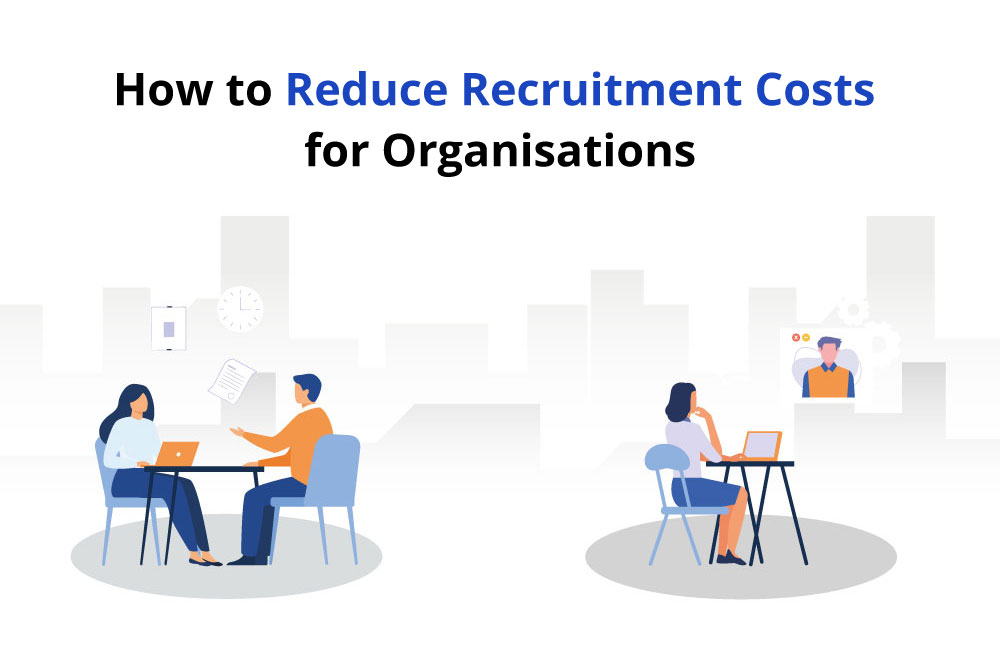How to Reduce Recruitment Costs for Organisations

Recruiters around the world are on an endless hunt for the ‘Top Candidates’. However, in this post-pandemic where remote jobs are now a thing, hiring candidates for both In-house and Remote teams was. With the Work From Home culture coming into the frame, companies no longer shy away from hiring remote talents across the globe. But the million-dollar question is ‘Which one of these hiring methods is more cost-effective?’ This blog will walk you through some of the ways to lower recruitment costs, compare in-house hiring and pre-vetted hiring and which hiring method would be the best fit.
Ways to reduce recruitment costs
Optimize your company career portal
Clearly communicated job details are crucial for reducing recruitment costs and hiring time. A career portal should provide accurate and relevant information about the job role, including salary, benefits, responsibilities, company information, and vision. To make it easier for job seekers to find the careers page, ensure it is easily accessible on your company website. Additionally, create a mobile-friendly career site and provide a clear call-to-action for easy access to the application page. Finally, link to your social media pages to connect with passive job seekers.
Recruit via Social Media
Posting job requirements on social media platforms like Facebook, Instagram, and LinkedIn can reach a wider audience of remote job seekers compared to traditional job boards. Millenials and Gen Z are more active on social media, making it an ideal platform for attracting a younger workforce. Additionally, social media allows you to promote your company culture and values, which can help attract top talent. Promotions can include videos, blog posts, infographics, how-to guides, etc. which may attract your dream candidates. Job posts can be in the form of attractive posters with appropriate links leading to the career page of the company website.
Tapping into internal talent pools and employee referrals
Most companies look outside their base when they need to fill top positions. Due to this, the in-house talents are underutilized. Instead, companies can promote employees who are already working in their organization. Existing employees are well aware of the company’s environmental practices and day-to-day demands. Since they are aware of the company culture and departmental demands, they would blend into the new position with trivial friction. This can bring in more candidates who would be the best cultural fit for the company and hence improve employee retention. They also will be able to use all the knowledge they have gathered over the years to work for the higher position which saves the recruitment costs and hiring time of the company.
Create strategies to reduce employee turnover
Promoting existing employees to higher positions can save recruitment costs in the long run by reducing the need to hire externally. Existing employees are familiar with the company culture and workflow, which can make them more productive and less likely to leave. Additionally, promoting employees can show that the company values their contributions and is invested in their development.
Use digital interview to reduce recruitment costs
Hiring costs can be reduced to an extent by leveraging technology for the purpose of hiring. Digital interviewing can be done through career portals, mobile recruiting, online assessments, recruitment through social media, etc. To identify candidates, companies may make use of social media pages like Twitter, LinkedIn, Facebook, and Instagram. Job requirements can be posted on social media platforms. Digital Interviews could be either one-way or two-way. One-way interviews provide the candidates with some predetermined questions which can be answered and recorded by the candidates. These responses are sent to the companies where recruiters can evaluate on their own time. Two-way interviews are conducted live over video calls. Conducting interviews digitally can save a lot of time and costs for the company since the HR team need not involve seniors and schedule interviews for days.
In-house recruitment Vs Third-party recruitment
Cost
The cost of in-house recruitment includes application tracking system costs and salaries for HR personnel. Third-party recruitment partners typically charge an agency fee that is included in the candidate’s salary. However, third-party recruiters can help you save time by conducting screening and initial interviews, and they may have access to a wider range of candidates.
Quality of Candidates
When hiring local talent, companies can easily assess candidate quality through direct interviews. In contrast, remote hiring involves a more rigorous selection process, including screening, technical assessments, background checks, and communication skills evaluations. This ensures that only the most highly qualified candidates reach the final round. Consequently, talent acquisition platforms consistently deliver top-tier candidates.
Time
In-house hiring can be time-consuming. With remote hiring, companies can leverage the expertise of talent acquisition partners to source pre-vetted candidates who closely match the job requirements. This streamlines the hiring process and reduces the time it takes to fill a role.
Talent Pool
With in-house hiring, there is a lot of competition among the top companies to hire top-notch talents from nearby locations. So when senior specialists are required, companies need to face talent shortages. But in remote hiring mode, companies can hire talents beyond the borders. So companies get access to a near-infinite reservoir of candidates.
Work Interruption
With local teams, there may be many causes for delays in work like unexpected sick leaves, vacations, and layoffs. With remote teams, members are focused on delivering the project within the deadline. So, even if remote hires tend to leave the company for unknown reasons, talent acquisition partners would provide a replacement so that work doesn’t get disrupted at any cost.
Which one to choose?
The best hiring method depends on your specific needs and budget. If you need to fill a senior management position or a role that requires a deep understanding of your company culture, in-house recruitment may be a better option. However, if you are looking to quickly hire remote candidates or need to fill multiple positions, third-party recruitment can be a more cost-effective option.
Final Thoughts
Having an in-house team or a remote team, both come with their own pros and cons. The success lies in choosing the right team based on the project scope and duration, the budget, and the current requirements of a business. The responsibility lies on the shoulders of the recruiters to analyze the requirements and decide on what kind of team is to be brought on board. This can be made possible if their HR team works hand in hand with a talent acquisition team. At Centizen Talent Hub, our staffing team will search for the perfect fit for your company by actively hiring experts based on your job requirement with reduced recruitment costs. All you have to do is tell us your requirements and watch our team match you with the best technical talent.
Centizen
A Leading IT Staffing, Custom Software and SaaS Product Development company founded in 2003. We offer a wide range of scalable, innovative IT Staffing and Software Development Solutions.
Contact Us
USA: +1 (971) 420-1700
Canada: +1 (971) 420-1700
India: +91 63807-80156
Email: contact@centizen.com
Our Services
Products
Contact Us
USA: +1 (971) 420-1700
Canada: +1 (971) 420-1700
India: +91 63807-80156
Email: contact@centizen.com






